Sources: | Date: 2019-07-24 11:28:34 | Browse:155882
At present, and even in the next few decades, sensors are listed as the top 10 technology products that affect and change the world economy and peoples lifestyles, indicating that the spring of sensors has come! The Internet of Things is a huge networ…
At present, and even in the next few decades, sensors are listed as the top 10 technology products that affect and change the world economy and people's lifestyles, indicating that the spring of sensors has come! The Internet of Things is a huge network formed by combining various information sensing devices and the Internet. The development of the Internet of Things requires technical support such as intelligent perception, identification and communication, and the key to perception is sensors and related technologies. The smart home control system is the "heart", and the sensor is the "veneer" of the entire control system, mastering the "central nervous system" of the entire system. The development of sensor technology has played a major role in the rapid development of smart homes.
From the perspective of the industrial chain, the upstream of the sensor is mainly composed of various parts and components to support the perception layer; the midstream is the transmission layer composed of optical transmission, communication equipment, network equipment, etc.; the downstream is the application layer, of which various components in the Internet of Things are Among them, smart home is one of the most important sectors.
Smart home sensors are the “eyes, noses and ears” in the home, because smart homes are inseparable from the “humanized” data collection of the living environment, that is, to convert various physical quantities, chemical quantities, and biomass in the home environment into Measurable electrical signal devices and components.
The smart home field requires the use of sensors to measure, analyze and control system settings. The smart devices used in the home involve technologies such as position sensors, proximity sensors, liquid level sensors, flow and speed control, environmental monitoring, and security sensors.
A few days ago, in order to accurately interpret the current status of smart sensor applications in the domestic family, "Smart Home" magazine, Digital Intelligence, and Smart Headline initiated the joint preparation of the "2019 Home Smart Sensor White Paper", which aims to comprehensively sort out the industrial ecology of sensors in the home.
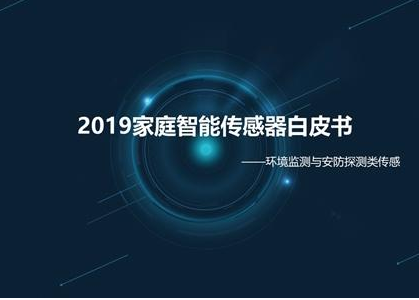
The overall scale of the sensing industry
As a very important device, sensors have formed a complete industrial chain. The United States, Japan, and Germany, as the world’s three largest sensor producers, account for nearly 60% of the market. At present, about 40 countries around the world are engaged in sensor research, production and application development, and there are more than 6,000 research and development institutions. Among them, the United States, Japan, Germany and other countries are strong, with a wide range of products, and innovative varieties and types are still emerging. There are about 26,000 species.
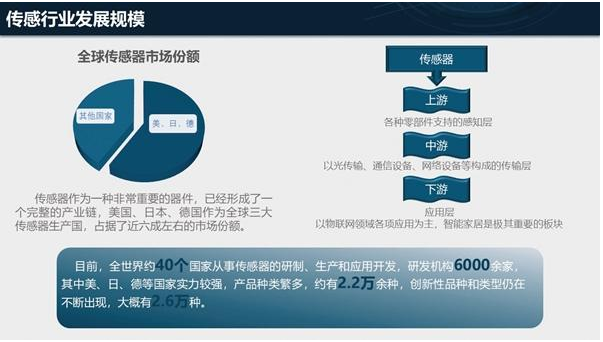
In 2015, the scale of China's sensor market was 99.5 billion yuan, a year-on-year increase of 15%. By 2016, China's sensor market reached 112.6 billion yuan, an increase of 13.2% year-on-year. As of the end of 2017, China's sensor market has grown to approximately 130 billion yuan. In 2018, my country's sensor market reached 147.2 billion yuan. It is predicted that my country's sensor market will reach 167.8 billion yuan in 2019, with an average annual compound growth rate of 12.66% in the next five years (2019-2023), and it is predicted that my country's sensor market will reach 270.3 billion yuan in 2023.
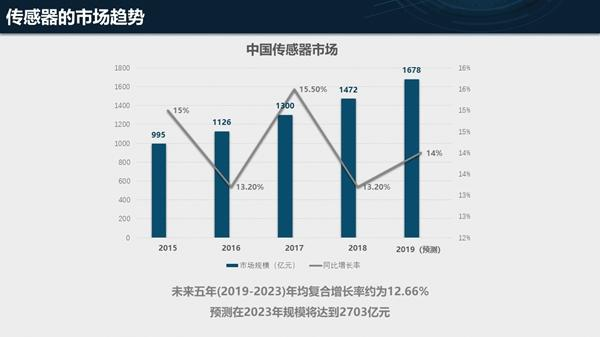
Users who use their home as their consumer unit are most concerned about family safety, and 30.0% of home security scenarios are considered to be just-needed scenarios. Smart security products include smart sensors, human sensors, door and window sensors, gas leak sensors, water immersion sensors, etc. The biggest difference between smart security and traditional security is to reduce dependence on people.
my country currently has about 12,000 kinds of sensitive components and sensors with scientific research results, technologies and products, of which there are about 7,000 conventional types and varieties.
With the development of the Internet of Things, the sensor industry will also usher in an explosion.
The development history of the sensor
1. The development history and status quo of sensors at home and abroad
As early as the 1980s, the United States believed that the world had entered the age of sensors, and established the National Technology Group (BTG) to help the government organize and lead the development of sensor technology for major companies and national enterprises and departments. The United States has long-term security and economy. Six of the 22 technologies vital to prosperity are directly related to sensor information processing technology.
Japan regards the development and utilization of sensor technology as one of the six core technologies of the country's key development. Among the key scientific research projects in the 1990s formulated by the Japan Science and Technology Agency, there are 70 key topics, of which 18 are closely related to sensor technology. Sensors, communications, and computers are called the three pillars of modern information systems. Because of its high technical content, strong penetration capability, and broad market prospects, it has attracted widespread attention from all over the world.
China began to get involved in the sensor manufacturing industry as early as the 1960s. During the "Eighth Five-Year Plan" period, China listed sensor technology as a national key scientific and technological research project, and established the "State Key Laboratory of Sensor Technology" and "National Sensor Engineering Center". Development base.
While the sensor industry is growing rapidly, my country's sensor technology development level, especially the key core technology innovation capability, still has a big gap compared with the international advanced level. At this stage, most of the core components of the main application sensors in my country's market still rely on imports, and the mainstream market products rely on foreign supporting equipment is particularly prominent. In the future, sensors will make breakthroughs in the two major directions of process technology and application.
At present, sensors are classified by purpose, and can be divided into force sensors, thermal sensors, humidity sensors, magnetic sensors, gas sensors, acceleration sensors, biological sensors, etc. The development and innovation of domestic sensor technology focuses on the three directions of material, structure and performance improvement: the development of sensitive materials from liquid to semi-solid, and solid; the development of structures in the direction of miniaturization, integration, modularization, and intelligence; The performance is developing in the direction of wide detection range, high detection accuracy, strong anti-interference ability, stable performance and long life.
The Internet of Things puts forward new requirements for sensor technology. With the development of the Internet of Things technology, new requirements have been put forward for traditional sensing technology. Products are gradually becoming micro-electromechanical system (MEMS) technology, wireless data transmission technology, infrared technology, new material technology, nanotechnology, ceramic technology, Thin film technology, optical fiber technology, laser technology, composite sensor technology, and multi-disciplinary cross-integration development.
2. The development trend of the domestic sensor industry
Research projects such as MEMS are included in the national high-tech development priorities. At present, the sensor industry has been recognized as a promising high-tech industry at home and abroad. It has attracted worldwide attention for its high technical content, good economic benefits, strong penetration, and broad market prospects. Our country's industrial modernization process and the rapid growth of the electronic information industry at a rate of more than 20% have driven the sensor market to rise rapidly.
In the next 5 years, the average annual compound growth rate of my country's sensor industry will reach 30%, much higher than the global average. However, the current instrument and meter companies that produce sensors with an output value of more than 100 million yuan account for only 13% of the total number of companies, less than 200 nationwide, and less than 3% of professional manufacturers with a complete range of products.
3. National favorable policies
In recent years, the government has continuously increased its attention to the sensor industry, and has issued a series of policies to promote its development, including the "National Integrated Circuit Industry Development Promotion Outline", "Made in China 2025", "About Actively Promoting the "Internet of Things+" Action National strategies such as the “Guiding Opinions of the People’s Republic of China” have promoted the development of the Internet of Things and sensors.
Since the end of the 1980s, my country has listed sensor technology as a national key scientific and technological project, and has successively established research and development bases such as the "State Key Laboratory of Sensor Technology" and "National Sensor Engineering Center".
With the support of national policies, a relatively complete innovation chain and industrial chain from basic research to applied research to demonstration application and industrialization have been gradually formed in the past 30 years. It has gradually moved from imitation and introduction to independent design and innovation development. Master the research and development technology of low-end sensors, and expand to the high-end field. With the acceleration of industrial modernization and the rapid development of the electronic information industry, the rapid growth of my country's sensor industry has been driven.
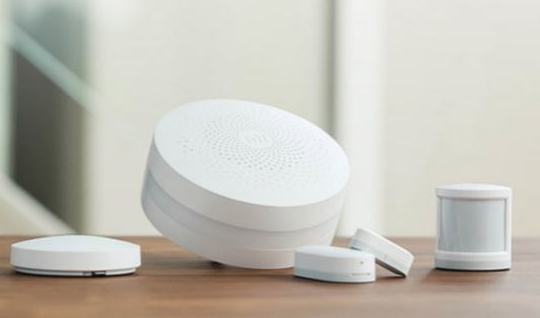
The development of domestic household sensors
Technology development trend: Three eras of home sensor technology:
The first generation is a structural sensor, which uses changes in structural parameters to sense and transform signals. For example: a resistance strain sensor, which uses the change of resistance when a metal material undergoes elastic deformation to transform an electrical signal.
The second-generation sensor is a solid-state sensor developed in the 1970s. It is composed of solid components such as semiconductors, dielectrics, and magnetic materials, and is made using certain characteristics of materials. For example, the thermoelectric effect, Hall effect, and photosensitive effect are used to make thermocouple sensors, Hall sensors, and photosensitive sensors.
In the late 1970s, with the development of integrated technology, molecular synthesis technology, microelectronic technology and computer technology, integrated sensors appeared. Integrated sensors include two types: the integration of the sensor itself and the integration of the sensor and subsequent circuits. This type of sensor mainly has the characteristics of low cost, high reliability, good performance, and flexible interface. The development of integrated sensors is very rapid. It now accounts for about 2/3 of the sensor market, and is developing towards low price, multi-function and serialization.
The third-generation sensor is a smart sensor developed in the 1980s. The so-called smart sensor means that it has certain detection, self-diagnosis, data processing and self-adaptive capabilities for external information, and is a product of the combination of microcomputer technology and detection technology.
In the 1980s, the intelligent measurement was mainly based on the microprocessor, and the sensor signal conditioning circuit, microcomputer, memory and interface were integrated on a chip, so that the sensor had a certain artificial intelligence. In the 1990s, the intelligent measurement technology has been further improved, and the intelligence has been realized at the level of the sensor, so that it has self-diagnosis function, memory function, multi-parameter measurement function and network communication function.
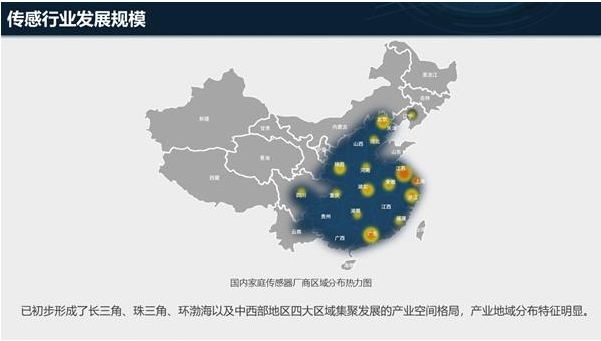
Heat map of the regional distribution of domestic home sensor manufacturers
The early bulk shipments of domestic home sensors were mainly security sensors, which have now evolved into two mainstream sectors: environmental home sensors and security home sensors. At present, China has initially formed the industrial spatial pattern of the four major regions of the Yangtze River Delta, the Pearl River Delta, the Bohai Rim, and the central and western regions, with obvious geographical distribution characteristics.
A few days ago, Tesla CEO Elon Musk bombarded the technical limitations of lidar as a sensor for self-driving cars on the company’s self-dri…
The weighing module industry market survey report is to use scientific methods to purposefully and systematically collect, record and organiz…
In the current technology industry, a variety of electronic systems and mechanical systems will use various weighing devices, and the most im…
At present, and even in the next few decades, sensors are listed as the top 10 technology products that affect and change the world economy a…
At present, load cells have already penetrated into a wide range of fields such as industrial production, space development, ocean exploratio…
In the combined strain pressure sensor, elastic sensitive elements can be divided into sensing elements and elastic strain elements. The sens…